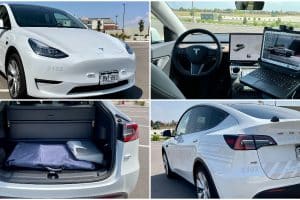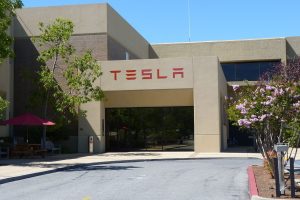In Q2’s conference call, Elon Musk noted: “The thing that bugs me the most is that our cars are not affordable enough. We need to fix that.” For those of us who have paid attention, we have seen the first of this new breed of affordable Tesla vehicles. I am thinking of course of the Cybertruck. It is the best selling vehicle type in North America, but a niche product in the rest of the world.
In order for the market to transition to fully electric vehicles, we need a suite of fully electric vehicles that families will buy to serve as their only, or main, car. So, a car with a 45 kWh battery will not suffice, even though it covers 95% of car usage scenarios, because it cannot take a family on vacation more than 150 miles away.
The challenge is that the new, affordable car needs to be a real Tesla. Not only being amazing, but offering a better value for money. Tesla autos are never slow. Tesla autos have ample range. Tesla autos appeal to a large public. Tesla autos are not copy & pasted from the 13 dozen models of legacy automakers just tweaked with different taillights. They are really designed for function. Last but not least, Tesla automobiles can be used as robotaxis.
Besides being a real Tesla, these new localized models should have a sticker price about the same as or lower than the competition and a body shape the local market prefers. The first that meets all of these criteria is the Cybertruck, tailor-made for the pickup truck segment of the North American auto market. It is one of the most affordable double cabin pickup trucks in the market. Also, it is one of the most versatile for work or leisure.
To answer all the critics who will point out that a vehicle like the Cybertruck with a price tag between $40,000 and $70,000 before options is not really affordable, note that I am using the word “affordable” for when the vehicle is the same price as the model it is competing with / trying to replace. I know it is not affordable to a hamburger-flipping high school student, or a single mom working two full-time jobs (or 3+ part-time jobs) just to feed her kids. But neither are any of the current models in the dealers’ showrooms. And a number of the models proposed below will cost less than $25,000. That is a price clearly in the “affordable” range of new car buyers.
Europe
For Europe, there are three models needed. Like the pickup is a staple for the American market, the following three are typical for Europe. They are: the large luxury station wagon in the D-segment and E-segment; the iconic Golf-type hatchback in the subcompact C-segment; and a smaller A- or B-segment (super) mini car that can also be used as the standard robotaxi and carsharing vehicle.
The first that Tesla should make is a Model 3/Y class station wagon. Simplest would be a Model Y with a prolonged roofline like the Audi, BMW, and Mercedes station wagon versions of their sedans have. The Model 3 roof is too low for this modification. Call it the Model B(rake) or Model W(agon). It needs the bigger 4680 batteries introduced on Tesla Battery Day for the extra range and power. The first high-capacity production line for these batteries will likely be in Brandenburg, so that should not be a problem. Towing capacity of 7700 pounds (3500 kg) is needed, with the range staying above 200 miles while towing. In the Netherlands, for example, one in nine families owns a caravan. They use their car to tow it to their holiday camping ground. The availability of a roof rack for transporting luggage, bicycles, building materials, or a ski box is also mandatory. This version would outsell the Model Y and the Model 3 in Europe, probably even the Models Y & 3 combined.
Second, Tesla needs a real hatchback. It should not be a more aesthetically pleasing, aerodynamically fastback like the Model Y and many coupes. Preferably, it would be in the style of a Volkswagen Golf, with a CUV sister like the Renault Captur. As a dealer once explained, a CUV is a hatchback with 2 inches of extra ground clearance, one inch more head room, and a $5,000 higher price tag. This should be the €25,000 model mentioned in the Battery Day presentation. It should have the towing and roof-rack options of the bigger Model B/W station wagon. Get it to market in early 2023 and Tesla owns the EU market.
Third, we need an A- or B-segment auto. These small so-called “city cars” are what private buyers buy the most in Europe. While the marketing suggests otherwise, they are not city cars at all, but simply small vehicles popular by mostly elderly people. They can offer the luxury of a new car without paying through the nose. They are used for shopping, driving 1–3 miles in the vicinity of the house, and visiting friends and family in the same or nearby cities. Don’t be surprised to see a usage pattern of 300 times 2 miles (3 km) and 50 times 150 miles (240 km). And the reason to buy is the 50 journeys outside the city.
Carmakers are looking to make small BEVs that are only able to operate within a large city like Paris. We need real Tesla cars in this segment of the market. Ease of use, range, fast charging, and Autopilot. Only 0–60 mph is less important. The mandatory tow hitch is mainly to transport bicycles. The micro MPV form factor is the most practical, but often also the ugliest. If Tesla can reinvent this class with the storage capacity and ease of getting in and out packaged in something that looks good, Tesla will earn our everlasting gratitude.
This small vehicle should also be the robotaxi or carsharing vehicle for Europe. Small and versatile are perhaps the most important characteristics.
China
The Chinese market is different from the European one. Many of the Chinese buyers of luxury sedans like the Model 3, Mercedes C-Class, or Volvo S60 can also afford a chauffeur. They like a longer model with more room in the back. The European competition puts an “L” behind the segment designation, like the Mercedes C-Class L. They are just 4 inches longer (wheelbase 3 inches) than the regular models. But it is a lot for the people in the back seats. Gigafactory Shanghai should start by building the Model SL and XL, followed by the Model 3L and YL. When Full Self Driving becomes available, the room in the back becomes even more important.
What the hatchback Golf type is for Europe, the Volkswagen Jetta/Bora or Nissan Sylphy/Sentra is for China. It is a small, subcompact (C-segment) family sedan. Towing capabilities and a roof rack are probably less important than in Europe. Those features are more for the lower-end utilitarian models, the very small and low-cost vehicles just above the motorized rickshaw. In Europe, these features are luxury holiday features. In other countries, they are often seen as the workman’s tools. The C-Segment sedan is a status and luxury item. It should not have attributes that suggest it is a means to get work done, like a van. This should be easy for Tesla. Just a smaller Model 3 and smaller Model Y.
I think Tesla should stay away from the Chinese A- and B-segment. There are a multitude of offerings for often very low prices. Tesla would be a super luxurious offering in these segments, but there are likely not that many buyers for super luxury in this part of the market.
USA
Beside the Cybertruck, the USA market can also use a lower cost fully electric passenger car. What they need is something a bit higher in SUV and CUV form than the current offerings. The SUV should be a boxier form, like what the Japanese are offering. I am thinking of the Toyota RAV-4 and 4Runner or the Mitsubishi Outlander. These should be in the same C-segment where VW is offering the ID.4. The shrunken Chinese Model 3 and Model Y are probably also welcome in the USA market.
Tesla
With factories and design centers in all three main markets, Tesla is creating the means to tailor its products for each market. It is clear from comments by Elon Musk that Tesla is going to do it. How Tesla is going to do — this will be fascinating to watch.
Trust Tesla to invent the wheel again. But only after studying all wheels made by the competition. With that statement, I mean that Tesla will look for an original way to be more efficient than Volkswagen in building many different vehicles using the same basic components. These will be great competitors to the Volkswagen ID.3 and ID.4 based on the Volkswagen Groups’s MEB platform in the same C-segment. Unfortunately for Volkswagen, the Tesla models will likely be a bit more advanced technologically and a bit more competitive in price. Volkswagen will win on customer loyalty and designing closer to what the customer is used to.
After the initial one-size-fits-all market approach practiced with the Model 3 and Model Y, Tesla should start to make variations on the base models to satisfy the strong desire of many car buyers for certain types of vehicles. It should not result in the hundreds of sub-models and versions available from BMW and Mercedes, but the current crop is too small and spartan to keep the dominant market share Tesla’s technical excellence has conquered.
For the production volume Elon has mentioned for 2030, about 20,000,000 vehicles per year, you have to win many very different customers with different needs and different tastes.
Original Publication by Maarten Vinkhuyzen at CleanTechnica.
Want to buy a Tesla Model 3, Model Y, Model S, or Model X? Feel free to use my referral code to get some free Supercharging miles with your purchase: http://ts.la/guanyu3423
You can also get a $100 discount on Tesla Solar with that code. Let’s help accelerate the advent of a sustainable future.





